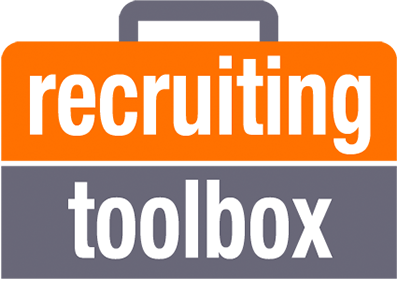Recruiting Toolbox Blog
The Most Important Recruiting Metric You’ve Never Heard Of: Time to Alignment

Misalignment is the root of all evil in recruiting.
Misalignment between the hiring manager and recruiter, between the hiring manager and their interviewing team, between the hiring manager and their boss, between the hiring manager and their candidate, between compensation approvers and the recruiter or hiring manager.
I could go on. Misalignment is all around us in recruiting. And I think one of the most important roles of the recruiter is to play the Talent Advisor role and help reduce misalignment.
Think about your recruiting funnel. Think about what makes it fat and what makes it skinny. Think about the root issues that can be addressed if we get people aligned earlier. Think about the cost savings — real money and time — if we are aligned with the hiring manager by the end of the kickoff meeting and not weeks later when our submittal:hiring manager accept ratio is 10:0.
Or if the hiring manager and their interviewing team are aligned pre-interviews and not weeks later, after we’ve wasted time interviewing candidates that were never going to get hired because the interviewing team wasn’t aligned on what good looks like, what we mean by senior, how hands-on technical this person needs to be, what we mean by culture add or diversity or high potential or A-player.
Ugh.
It’s expensive to be misaligned. It costs us, it costs the hiring manager, it costs the candidate (wasted time, bad candidate experience), and it costs our businesses.
So, what can we do?
We need to drive alignment
We can take responsibility for aligning with the hiring manager and not moving forward to the next step (whether that’s sourcing or interviewing or getting the team together to make a decision) until we’re aligned.
Sometimes this looks like education on market realities, pushing back on unrealistic candidate profiles to come up with something realistic given the pay and attractiveness of the work, helping the hiring manager define their actual hiring criteria (hint: A-player, strong culture fit, years of experience, and target companies are not interview-ready hiring criteria) . . . and then aligning their interviewing team pre-interview, so we don’t waste everyone’s time by allowing each interviewer to go into their interview without assigned focus areas and a different idea of “what good looks like” for this role. That leads to so many false negatives and often, pretty bad diversity hiring results.
Enter: Time to Alignment (TTA)
So, what’s this new metric “time to alignment?”
Well, it’s not a tracked metric . . . yet.
At least, I’ve not heard of any company tracking this. They sort of track stuff that impacts this, like candidate submittals to hiring manager screens, screen to interview, and interview to offer. But I’m talking about a pre-candidate submittal metric. Something that comes after the kickoff meeting, pre-sourcing.
If the misalignment we’re talking about is around candidate profiles, it’d come after you’ve calibrated — maybe with sample resumes or profiles, and then pre-closed your hiring manager on the target candidate profile. If the misalignment we’re talking about is pre-interview, then we’re talking about a pre-interview team alignment meeting, where the hiring manager and you facilitate a conversation with all of the interviewers to make sure everyone has well-defined, well-understood focus areas and know what the deal-breaker skills are. And make sure they also understand where we’ll make trade-offs and where we won’t.
Are ATS vendors going to jump in to add another step in their workflows where you move a req status to “aligned”? Probably not.
But even if it’s not a real metric yet, I’d love it if you’d talk to your teams about this TTA metric. If you’re a TA leader, ask your recruiters and sourcers to talk about the root issues that come when we leave a kickoff meeting misaligned or when we interview candidates before the interview team is aligned.
Maybe you do start to track this kind of metric on a per-req basis. It wouldn’t be a metric I’d share with the business right away, as it’d be something I’d want to track internally for a while and see some data that highlights what causes the time to alignment to go up or down. But once I had a little evidence that the three biggest root issues are x, y, and z, I’d sure want to introduce this concept to hiring managers in the kickoff meetings (please don’t call them intakes).
Pause if you’re misaligned
The root of all evil is misalignment.
It really is.
Almost all major problems in recruiting can be connected back to misalignment early in the process. A missed opportunity to pause, get aligned (or realigned), and update our approach. The last thing you want to do is keep on sourcing, sending candidates to hiring managers to review, and bring candidates in to interview if you know the hiring team isn’t aligned.
Companies with a high hiring bar and a strong focus on quality over speed give their recruiters permission to pause and get folks aligned. And the companies with a high hiring bar at scale expect the hiring managers to align their teams on what good looks like, in partnership with their recruiter.
So, what do you think are the root issues causing misalignment with your hiring managers in your process? What can you do to improve time to alignment?
© Recruiting Toolbox, Inc.
No duplication or re-posting without express written permission of Recruiting Toolbox, Inc. - contact us at www.RecruitingToolbox.com/
